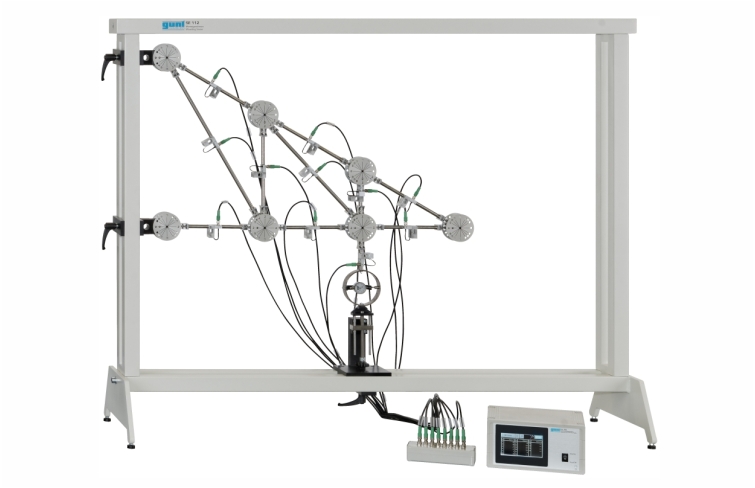As light-weight structures offering a high degree of rigidity, trusses are employed in the construction of halls, bridges, cranes, pylons and masts. Trusses are bar structures in which the bars are subjected to compression or tension loading, but not to bending.
The object of the experiment is to measure the bar forces in a single plane truss subjected to a single external force. The SE 110.21 experimental setup features bars with special snap-lock closures on their ends allowing them to be fixed easily into the node disk. The range of different bar lengths provided permits three statically determinated truss to be constructed.
The bars are hinged, joined together by node disks, and are subjected only to compressive or tensile stress. No moments are transmitted in the nodes; they can be regarded as frictionless.
Consequently, our trusses can be considered as ideal trusses. A load application device attached to a node disk generates an external force. All the forces on the truss bars are recorded by means of strain gauge measurement.
Computerised evaluation of the measured values is provided by measuring amplifier FL 152 (16 input channels). The software in FL 152 is used to manage the measured data and provide graphical representation of the bar forces. The software features a comprehensive help function.
All the component elements of the experiment are clearly laid-out and housed securely in a storage system. The complete experimental setup is arranged in the frame SE 112.
























